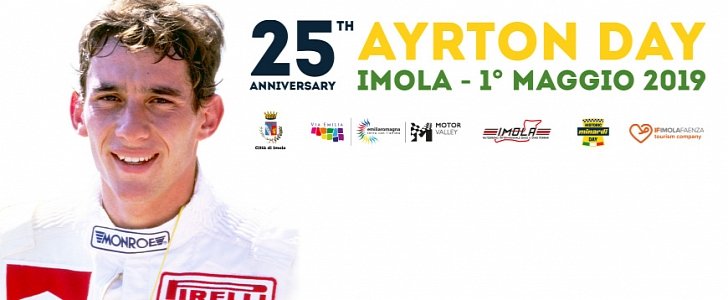A quarter of a century ago, one of the darkest weekends in Formula 1 history came to a tragic conclusion in Imola, Italy, with the death of one of the competition’s greatest drivers: Ayrton Senna.
Senna was the second fatality of a GP that forever changed the face of Formula 1. What started like any other F1 weekend on Friday quickly became an abnormal one on Saturday, when Austrian Roland Ratzenberger died during qualifying for the 1994 San Marino Grand Prix.
Saddened by the loss of the Austrian driver, the competition tried to move on, even if more and more voices – including Senna’s – immediately began calling for the implementation of improved safety systems.
On Sunday, seven laps into the San Marino Grand Prix, a steering column failure sent Senna off the track at the Tamburello corner, in a straight line and right into a concrete wall. The driver was able to briefly apply the brakes before the crash, slowing the car from 307 kph (191 mph) to 233 kph (145 mph). It was not enough to save his life.
Inside his car, emergency responders found an Austrian flag, one Senna had intended to raise after the race in Ratzenberger’s honor.
Senna, born Ayrton Senna da Silva, was a Brazilian national that started his open-wheel career rather late, in 1981, when he was 21 years old. Competing at first in the British Formula Three Championship, Senna quickly made his mark, got a driver’s position with Toleman-Hart in 1984 and made his Formula 1 debut.
By the following year, a much bigger team needed his services: Lotus-Renault. With this team, the driver scored the first pole position of his career, which a few hours later turned into his first win in the competition.
Senna joined the McLaren-Honda team in 1988, and it was here he would be making history. Between him and his colleague Alain Prost, all but one of the 16 Grands Prix held that year went to McLaren. And as a driver for the then British-Japanese team, Senna was crowned champion of the competition three times, in 1988, 1990 and 1991.
When he died, Senna was driving for Williams, which he had joined in 1994.
His death, along with that of Ratzenberger, prompted drastic changes when it comes to the safety of the drivers, including the implementation of the Head And Neck Support (HANS) system.
On Wednesday, May 1, the Imola circuit will host a day of commemorative services, complete with F1 cars running down the track and a photographic exhibition.
Saddened by the loss of the Austrian driver, the competition tried to move on, even if more and more voices – including Senna’s – immediately began calling for the implementation of improved safety systems.
On Sunday, seven laps into the San Marino Grand Prix, a steering column failure sent Senna off the track at the Tamburello corner, in a straight line and right into a concrete wall. The driver was able to briefly apply the brakes before the crash, slowing the car from 307 kph (191 mph) to 233 kph (145 mph). It was not enough to save his life.
Inside his car, emergency responders found an Austrian flag, one Senna had intended to raise after the race in Ratzenberger’s honor.
Senna, born Ayrton Senna da Silva, was a Brazilian national that started his open-wheel career rather late, in 1981, when he was 21 years old. Competing at first in the British Formula Three Championship, Senna quickly made his mark, got a driver’s position with Toleman-Hart in 1984 and made his Formula 1 debut.
By the following year, a much bigger team needed his services: Lotus-Renault. With this team, the driver scored the first pole position of his career, which a few hours later turned into his first win in the competition.
Senna joined the McLaren-Honda team in 1988, and it was here he would be making history. Between him and his colleague Alain Prost, all but one of the 16 Grands Prix held that year went to McLaren. And as a driver for the then British-Japanese team, Senna was crowned champion of the competition three times, in 1988, 1990 and 1991.
When he died, Senna was driving for Williams, which he had joined in 1994.
His death, along with that of Ratzenberger, prompted drastic changes when it comes to the safety of the drivers, including the implementation of the Head And Neck Support (HANS) system.
On Wednesday, May 1, the Imola circuit will host a day of commemorative services, complete with F1 cars running down the track and a photographic exhibition.


